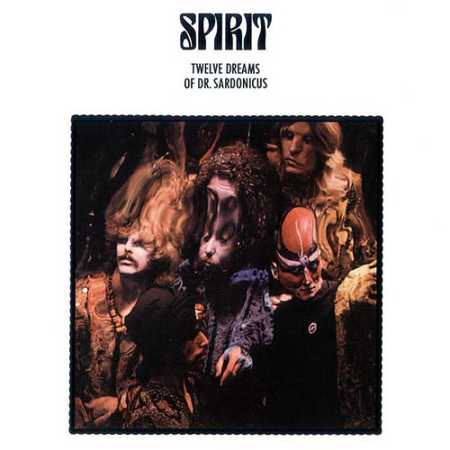Forums › Forums › Farktography General Chat › This week’s contest › 03-02-11 – I’m Beginning to See a Pattern Here…
- This topic has 82 replies, 18 voices, and was last updated 13 years, 1 month ago by
olavf.
-
AuthorPosts
-
January 6, 2011 at 2:32 am #2213
Elsinore
KeymasterPatterns or motifs, geometric or natural; show us pictures that rely heavily upon repeating elements as a main focal point.
Theme suggestion courtesy of millera9–thanks!
February 1, 2011 at 7:45 pm #37570clouddancer
ParticipantSimple question, but not so simple answer, I fear. How does one go about making a kaleidoscope filter for the camera, or otherwise make a kaleidoscope with a viewing area big enough to be photographed? Son got a kaleidoscope for Christmas and I stuck it up to my camera and got some ok shots, but I’m relatively sure it can be better. Suggestions? Or is this type of thing considered against the rules?
February 1, 2011 at 8:04 pm #37571millera9
ParticipantSimple question, but not so simple answer, I fear. How does one go about making a kaleidoscope filter for the camera, or otherwise make a kaleidoscope with a viewing area big enough to be photographed? Son got a kaleidoscope for Christmas and I stuck it up to my camera and got some ok shots, but I’m relatively sure it can be better. Suggestions? Or is this type of thing considered against the rules?
I would think that’s within the rules of farktography since it’s the same as using a really zany physical filter in front of your camera lens, which is legal. As for actually doing it, they make all kinds of adapters for hooking cameras to telescopes and other like devices but I’m not sure you really need to go that far. I would definitely try to do this with a small point-and-shoot type camera first because the smaller lens diameter will be easier to mate to the eyepiece of the kaleidoscope. I would try just a short cardboard tube (like the center of a toilet paper roll, bu cut down to be shorter) and a bunch of electrical tape to mate the eyepiece to the camera lens. You’ll probably have to zoom in a bit and you might have to focus manually. Let us know how it goes!
February 1, 2011 at 8:09 pm #37572ravnostic
Participantcd, google “kaleidoscope camera filter”; there seems to be lots of projects people have posted for that.
//side note; went shooting one particular subject for this contest, got lots of pics, and took some ‘incidentals’ of other subjects while out. Got the ‘perfect’ picture for this contest from the incidentals (completely unplanned), and the ‘perfect’ picture for an upcoming hoppered theme from the subject I was shooting for this one (ditto). Funnay how photographs turn out sometimes, suggesting things you weren’t even going for.
February 1, 2011 at 8:51 pm #37573 orionidParticipant
orionidParticipantI have have one half constructed on the to-finish-soon-ish shelf. I was hoping a) to have it done before this contest, b) to find something worthwhile to shoot with it.
I bought a ten pack of 12×12 mirrored tiles. I cut them into 3.5×12-inch strips. Even with a leveled rig, and a diamond wheel designed for glass, I went through half the box to get three strips that weren’t all mangled up or cracked along the edges. Next step is mounting them inside a 4″ PVC pipe (and installing a 1/4-20 thread tripod adapter on said pipe). So far, when op-testing the mirrors, they work okay with the 18-55 at 18mm, but really give the effect with a fisheye. I used the larger sheets of mirror to be able to fit over an SLR lens. With a point and shoot, you could probably either rip apart a toy-store kaliedoscope (hmmm…..) at just the eyepiece end to fit over the lens and take photos of the goodies inside, or both ends to photograph whatever you want.
/Also working on a prismascope. And an animorph. And a morph-plate box for an slr. And some format conversions like Polaroid 95A to 120 for Kestrana, Polaroid J66 to dual 35mm, and Instamatic 126 to 35mm. And some pinholes….. Ah, croikey.
February 1, 2011 at 9:18 pm #37574clouddancer
ParticipantI have Googled to find what I can, but I think I’m a bit dense to understand it how they’re doing it and what the results are. I’ll ask Husband when he gets home. Many times he can explain things to me like this, and he might have a couple of ideas of his own to throw in.
February 2, 2011 at 1:54 am #37575clouddancer
ParticipantThis is one of the ones I took today. Most are pretty much the same type, just variations of the kaleidoscope pattern. Thoughts? Will this work for the contest?
February 2, 2011 at 3:01 am #37576 orionidParticipant
orionidParticipantYou’ve definitely got something going in concept. Try setting your white balance on tungsten for better tones.
February 3, 2011 at 12:28 am #37577LeicaLens
ParticipantI have have one half constructed on the to-finish-soon-ish shelf. I was hoping a) to have it done before this contest, b) to find something worthwhile to shoot with it.
I bought a ten pack of 12×12 mirrored tiles. I cut them into 3.5×12-inch strips. Even with a leveled rig, and a diamond wheel designed for glass, I went through half the box to get three strips that weren’t all mangled up or cracked along the edges. Next step is mounting them inside a 4″ PVC pipe (and installing a 1/4-20 thread tripod adapter on said pipe). So far, when op-testing the mirrors, they work okay with the 18-55 at 18mm, but really give the effect with a fisheye. I used the larger sheets of mirror to be able to fit over an SLR lens. With a point and shoot, you could probably either rip apart a toy-store kaliedoscope (hmmm…..) at just the eyepiece end to fit over the lens and take photos of the goodies inside, or both ends to photograph whatever you want.
/Also working on a prismascope. And an animorph. And a morph-plate box for an slr. And some format conversions like Polaroid 95A to 120 for Kestrana, Polaroid J66 to dual 35mm, and Instamatic 126 to 35mm. And some pinholes….. Ah, croikey.
Cue the McGuyver theme…. 😉
(I have no idea what a morph-plate is)
February 3, 2011 at 12:57 am #37578Uranus
ParticipantCue the McGuyver theme…. 😉
(I have no idea what a morph-plate is)
isn’t it what they made the little plasticine guy on?
February 3, 2011 at 2:31 am #37579LeicaLens
ParticipantCue the McGuyver theme…. 😉
(I have no idea what a morph-plate is)
isn’t it what they made the little plasticine guy on?
That was actually my first thought. What was the name of Morph’s slightly evil twin/friend? He was made of a lighter coloured plastacine.
February 3, 2011 at 12:01 pm #37580 orionidParticipant
orionidParticipant(I have no idea what a morph-plate is)
It’s kinda like a pinhole, but you use two different (changeable) plates with lines or squiggles on them to completely morph the image in camera. I made a device from a cigar box that attaches to my dslr and has changeable plates, I’m just having trouble fine tuning it. It seems black printer ink is not as opaque as one would like.
February 3, 2011 at 2:32 pm #37581LeicaLens
ParticipantIt’s kinda like a pinhole, but you use two different (changeable) plates with lines or squiggles on them to completely morph the image in camera. I made a device from a cigar box that attaches to my dslr and has changeable plates, I’m just having trouble fine tuning it. It seems black printer ink is not as opaque as one would like.
I’m still not quite getting it. I understand the purpose, but where do you out the plates? Between the pinhole and the sensor? I take it the plates are supposed to allow a certain amount of light through, and block out the rest, thereby distorting the image? The squiggly lines blocking the light?
A quick google and flickr search didn’t help me much.February 3, 2011 at 2:49 pm #37582ravnostic
ParticipantIt’s kinda like a pinhole, but you use two different (changeable) plates with lines or squiggles on them to completely morph the image in camera. I made a device from a cigar box that attaches to my dslr and has changeable plates, I’m just having trouble fine tuning it. It seems black printer ink is not as opaque as one would like.
I’m still not quite getting it. I understand the purpose, but where do you out the plates? Between the pinhole and the sensor? I take it the plates are supposed to allow a certain amount of light through, and block out the rest, thereby distorting the image? The squiggly lines blocking the light?
A quick google and flickr search didn’t help me much.Do correct me if I’m wrong, big O’ (may I call you that, now that you’re rocking the top spots again this week? 2 out of 3…) Imagine this–you know those ‘psychic’ reading cards where there’s two squiggly lines, or a plus sign, or a star, triangle etc? Well, picture one of those as the ‘diaphragm’ for the lens (instead of the usual shutter system, kinda like a bokeh filter, but more direct). Some light would make it to the sensor/film surface, but it would be bent around the corners, so to speak. Then picture another one, different shape, in front of it. How would the light bend to get around both of them? What kind of distortions might there be in the resulting image, given how light bends around edges? The result could be very weird, very different from what you might expect–and I think that’s what big O’ is going for here.
I’d be interested in knowing what shapes you’re toying around with.
February 3, 2011 at 6:47 pm #37583Zero_Exponent
ParticipantIs that how these were done?


I’ve always assumed it was funhouse mirrors.
-
AuthorPosts
- The topic ‘03-02-11 – I’m Beginning to See a Pattern Here…’ is closed to new replies.